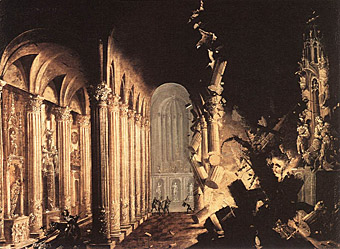
Explosion in a Church.
“Enigma” or “mystery” are the words usually associated with “Desiderio” (or even “Monsù Desiderio”), due to years of misattribution that made two obscure painters of the same period with similar styles appear to be a single artist.
Until some fifty years ago, the identity of François de Nomé (ca. 1593–after 1634) was hidden by confusion with another contemporary painter from the Lorraine, Didier Barra (called “Monsù Desiderio”), whose work was at times disturbingly similar. In the 1930s, when the Surrealists were searching for forerunners, there was a revival of interest in Nomé, a painter most noted for fantastic architectures, eerily lit night scenes of the ruins of cities, and of catastrophic visions. He has continued to fascinate the modern mind for fifty years.
François de Nomé has fascinated me since I found his wonderfully-titled (and painted) Explosion in a Church in an art anthology, where the picture is credited to “Francesco Desiderio”. (Typically the painting also has another title, King Asa of Juda Destroying the Idols.) Much of de Nomé’s work is unsigned and undated which doesn’t help matters, but stylistically it fits into the 17th century tradition of the capriccio, deliberately grotesque or fantastical works that give an artist’s imagination free reign.
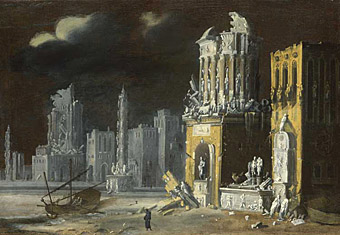
Fantastic Ruins with St. Augustine and the Child.
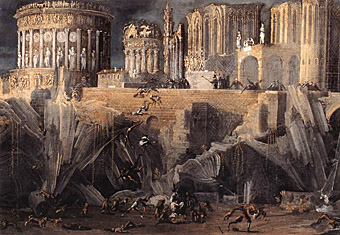
A Fantastic Architectural View.
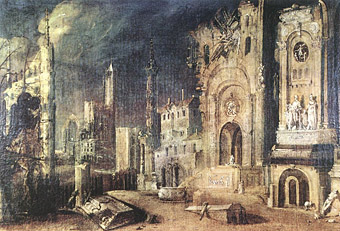
Martyrdom of a Saint.
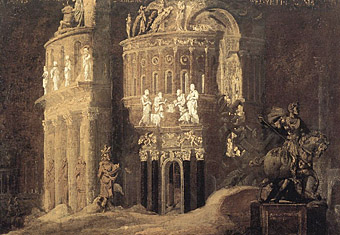
Landscape with Roman Ruins.

One thought on “The enigma of Desiderio”
Comments are closed.